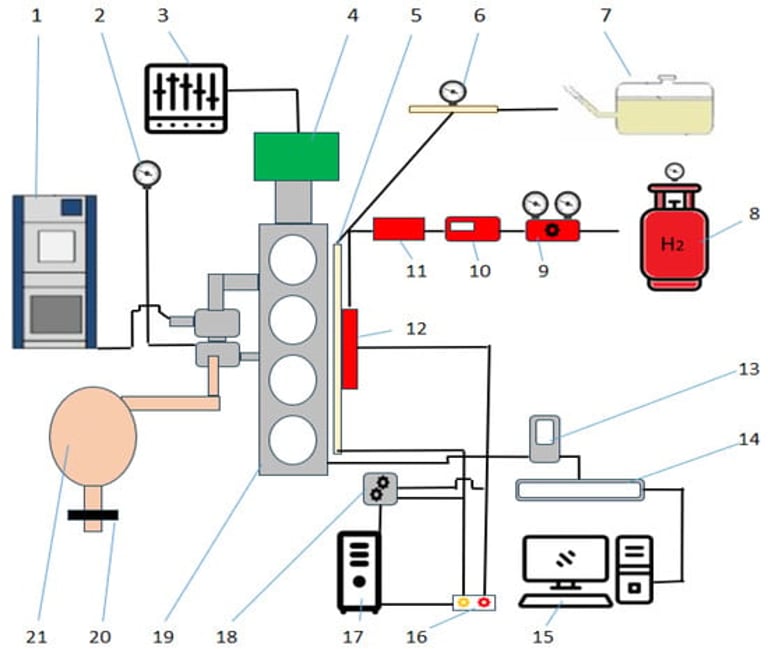Hydrogen and Methanol: Paving the Way for Cleaner, Efficient Engines and a Greener Future
August 14, 2024
Recent research highlights the potential of hydrogen as a cleaner fuel alternative, emphasizing its role in optimizing engine performance and facilitating a smoother energy transition.
The study specifically investigates hydrogen's application in spark ignition engines, aiming to enhance efficiency while significantly reducing emissions.
To meet global warming targets by 2050, hydrogen and its derivatives, such as methanol, must account for over 14% of total energy consumption.
Methanol is recognized as a hydrogen-based fuel that can substantially lower carbon emissions in the transportation sector.
Blending methanol with gasoline has been shown to enhance combustion efficiency and reduce harmful emissions, making it a viable option for dual-fuel engine systems.
Research indicates that the blending ratios of methanol and the conditions under which it is burned significantly influence combustion characteristics and emissions.
An optimal methanol blending ratio of around 10% volume has been identified for achieving stable combustion and lower emissions.
Combining hydrogen with natural gas into a hydrogen-enriched natural gas (HNG) mix presents a promising approach to reducing emissions while improving fuel efficiency.
Hydrogen has been identified as an effective secondary fuel for diesel engines, contributing to lower emissions, although it may increase nitrogen oxides under certain conditions.
The growing interest in natural gas, particularly methane, is seen as a crucial step toward achieving a fully decarbonized energy landscape.
This research aligns with broader efforts to reduce greenhouse gas emissions in the transport sector, supporting European Union goals for 2050.
The study's lead author emphasizes that current renewable electricity sources in the U.S. are insufficient for hydrogen production necessary for light-duty vehicles.
Summary based on 7 sources



